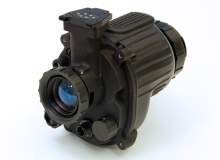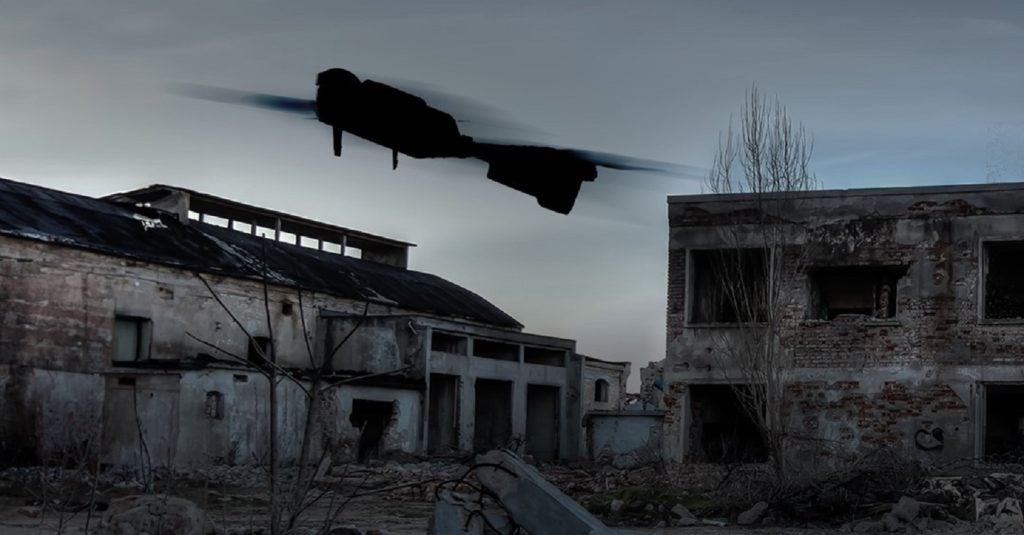
History and technology of night vision
Military night vision (NV) systems date back to active infrared systems used during World War II, with the more familiar passive image intensification systems that rely on ambient light being introduced during the Vietnam War.
The image intensifier in NV technology is a vacuum tube that amplifies low levels of ambient light using a photo cathode. This converts the incoming light into photo electrons that are accelerated towards a phosphor screen, creating the familiar bright green image.
Where a soldier might be able to see ten to 30 metres ahead under dim moon or star-light, using NV goggles he could see for hundreds of metres.
ITT Exelis – employing sensor fusion
One of the companies aiming to introduce new capabilities to this basic NV function is ITT Exelis, which has been in the NV business from its very earliest days, carrying out research, development and production from its US headquarters in Roanoke, Virginia, for the past 50 years.
The latest version of the company’s NV technology employs sensor fusion which takes infra-red heat signature information and combines it with traditional image intensification. The combination enables the wearer to pick up heat signatures far off in the distance that may be hidden behind bushed or vehicles and pull out objects of interest from the background.
See Also:
"Exelis has been working on sensor fusion devices for about ten years," said David Smith, ITT Exelis vice president of programme management for night vision business development.
How well do you really know your competitors?
Access the most comprehensive Company Profiles on the market, powered by GlobalData. Save hours of research. Gain competitive edge.

Thank you!
Your download email will arrive shortly
Not ready to buy yet? Download a free sample
We are confident about the unique quality of our Company Profiles. However, we want you to make the most beneficial decision for your business, so we offer a free sample that you can download by submitting the below form
By GlobalData"We are the sole-source provider for sensor fusion for head-mounted devices to the US Army and have a large number of those devices fielded with the US Army and Special Operations."
Sensor fusion is currently barred from the export market, but international audiences will be able to benefit from ITT Exelis’ latest innovation for enhanced situational awareness. Its i-Aware family of products incorporates the ability to import data from external devices and display it in the NV goggles, and export the image the wearer sees.
"Up until this point, NV goggles have been a stand-alone device where a soldier that is wearing that night-vision is only able to see what’s visible through that device," said Smith.
"They’re also not able to share the information with anybody else or receive information from anybody else in a visual format."
With i-Aware, soldiers can receive a wide variety of information into the goggles, such as full-motion video from an unmanned aerial vehicle (UAV) carrying out overhead surveillance, GPS map location information, or a still photograph identifying a key target individual.
The images they see can also be automatically transmitted to a unit leader or a Command and Control centre.
Not only does this mean they do not have to take their eyes off the scene to look at another device such as a hand-held computer, it also reduces the total number of gadgets carried, freeing the soldier from the bulk and weight.
The soldier can readily select just how much he sees and transmits according to his mission.
Michael LoDebole, director of international business development for ITT Exelis’ Night Vision International Marketing department, said: "Using ergonomically-designed switches, the soldier can dial in to exactly the information he wants to see so he’s not overloaded with a bunch of information when he needs to make a critical decision."
This i-Aware technology combines with sensor fusion innovations in IRR Exelis’ Spiral Enhanced Night Vision Goggle and without sensor fusion in the export variant, the Tactical Mobility Night Vision Goggle (TMNVG).
This capability is delivered without sacrificing weight or bulk. LoDebole explained: "The TMNVG actually weighs less than the current PBS-14 goggle that’s widely fielded throughout the world and has a tube and housing around it. We’re providing more capability in a smaller, lighter package."
Smith predicts the future of NV will revolve around this ability to share information. "Lethality is now all about the time from detection the time of engagement," he said.
"The battlefield is getting smaller and smaller, and we need to be able to help the soldiers make faster decisions about what they need to do and how to engage their target. I-Aware was specifically developed with that in mind."
Qioptiq – unleashing dragon technology
Another company with an eye to the future of NV and thermal equipment is the world’s largest photonics solutions provider Qioptiq. Launched in late 2010, its latest range of thermal weapons sights, Dragon, comes in a range of size, weight and power for a variety of ranges and users.
One of these, the Dragon C (compact), is primarily designed to be used as an in-line ‘clip on’ thermal weapon sight, allowing the user to retain his existing magnifying day sight on the weapon without affecting aim. Ultra light at just 375g, it can also be used on its own or as a hand-held device.
Qioptiq aims to stay ahead of technological breakthroughs with its own world-class optical component and metal work machining facility, which has links to several universities and technology centres.
"A partnering approach with suppliers has been adopted on high technology items and new technology materials which also assists our product development and long term aim of smaller, lighter, better," said Qioptiq communications manager Craig Taylor.
Looking to the future, Qioptiq is seeking to introduce new technologies such as image fusion and wavefront coding.
"Computational imaging techniques, of which wavefront coding is a specific example, combine novel optical design with digital electronics processing," said Taylor.
"Such techniques enable new sensors to be developed with improvements in performance, mass, size and cost. This can produce a sensor with significantly enhanced depth-of-focus compared with conventional optical solutions and can remove the need for a focus mechanism. It can also reduce the number of lens elements, improve performance over an extended temperature range or deliver a reduction in the sensitivity to manufacturing tolerances."
Qioptiq is also interested in black silicon, a needle-shaped microstructure where the needles are single-crystal silicon which can be used to increase the sensitivity of thermal imaging.
"The aim would be to refine the system capability as simplistically as possible, whilst avoiding unnecessary complexity and technology overload," said Taylor.
Organic LED research – paper-thin perception
Another area where materials science might inform the future of NV is the use of thin-film technology using organic LEDs (OLEDs). A lightweight, paper-thin technology developed at the University of Florida, US, could add NV capabilities to standard glasses or cameras without requiring a full goggle.
Funded by the US Defense Advanced Research Projects Agency (DARPA) and led by researcher Franky So, the new imaging device replaces the vacuum tube with several layers of organic semiconductor thin film materials.
The first few layers detect infrared producing a signal that is amplified then output into the remaining layers as visible light. The maximum power requirement is just five volts so it could be powered from a tiny battery.
Whatever form future NV systems take, they will always aim to fulfil the goal of all military equipment used by dismounted soldiers – providing more functionality at a lighter weight while using less energy.




